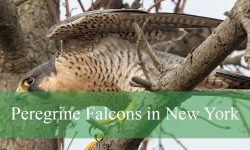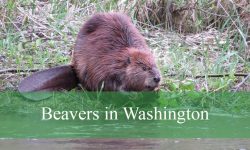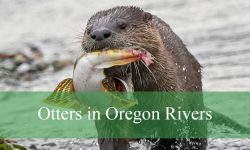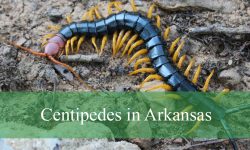Across the vast grasslands of Nebraska, beneath the rolling hills and open skies, an entire underground civilization thrives—one that most people rarely notice. These are the prairie dogs, the small, social rodents whose whistles echo across the plains. While often mistaken for pests, prairie dogs are actually keystone species—animals so vital that their presence shapes the entire ecosystem around them.
In Nebraska, prairie dogs are both loved and misunderstood. To some, they’re charming symbols of the Great Plains. To others, they’re agricultural nuisances that compete with cattle and damage crops. But beneath these surface perceptions lies a fascinating truth about their intelligence, communication, and environmental importance.
In this article, we’ll explore what you didn’t know about prairie dogs in Nebraska—their hidden behaviors, complex societies, and surprising role in maintaining the balance of the prairie ecosystem. By the end, you may see these little burrowers in a whole new light.
The Prairie Dogs of Nebraska
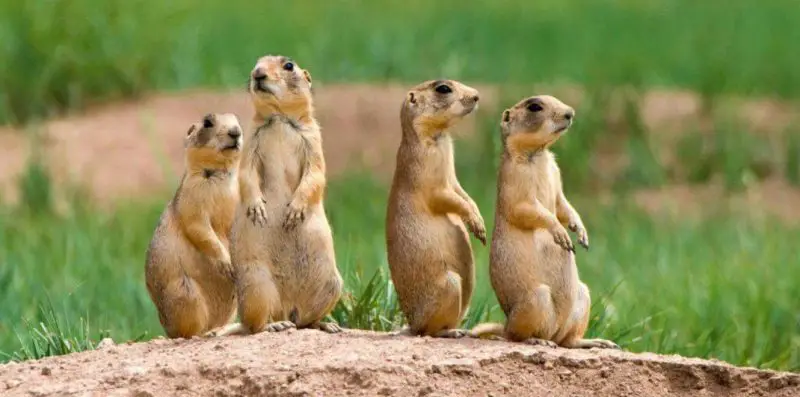
Species Overview
Nebraska is home to one primary species: the black-tailed prairie dog (Cynomys ludovicianus), which ranges across much of the Great Plains, including western and central Nebraska. Smaller populations of white-tailed prairie dogs once existed, but today, the black-tailed species dominates the state.
Adult prairie dogs measure 12 to 16 inches long, including their short, black-tipped tails, and weigh around 2 to 3 pounds. They have tan fur that blends perfectly with the dry grasslands, large dark eyes, and sharp claws built for digging.
Range in Nebraska
Prairie dogs thrive in western and central Nebraska, particularly in regions like:
- The Sandhills
- Pine Ridge region near Chadron
- Panhandle counties like Scotts Bluff and Dawes
- Shortgrass prairies of the Great Plains
These areas provide the open grasslands prairie dogs need to detect predators and dig their elaborate burrow systems.
The Secret World Beneath the Prairie
Burrow Architecture
One of the most impressive aspects of prairie dogs is their burrow system, or “town.” These underground networks can stretch for miles, with dozens or even hundreds of entrances. Each burrow includes multiple chambers:
- Nurseries for raising young
- Storage rooms for food
- Sleeping areas
- Escape tunnels that lead to hidden exits
Entrances are often surrounded by mounds of soil that act as lookout posts and flood barriers. Some burrow systems in Nebraska have been known to house thousands of prairie dogs in complex colonies extending across hundreds of acres.
Underground Communities
A single colony—known as a prairie dog town—is made up of smaller social units called coteries. Each coterie consists of:
- One or two males
- Several females
- Their young offspring
Within each coterie, prairie dogs share food, groom one another, and defend territory. These small family units form the foundation of an organized, cooperative society that functions much like a human neighborhood.
Communication: The Language of Prairie Dogs
The Most Complex Vocabulary in the Animal Kingdom
Few people realize that prairie dogs are among the most communicative mammals on Earth. Their chirps and whistles form a sophisticated language capable of describing predators in detail.
Studies by biologist Dr. Con Slobodchikoff revealed that prairie dogs can convey specific information such as:
- Type of predator (hawk, coyote, human, etc.)
- Size and shape of the threat
- Color of clothing worn by humans
- Direction and speed of approach
In Nebraska’s open grasslands, this intricate communication system allows prairie dogs to coordinate defense and ensure the colony’s survival.
Alarm Calls
When a predator is spotted—whether it’s a badger, hawk, or rattlesnake—prairie dogs emit sharp, high-pitched barks. Nearby individuals repeat the call, spreading the message across the entire town in seconds.
Once the danger passes, a distinct “all-clear” call lets everyone know it’s safe to emerge again.
Daily Life in a Nebraska Prairie Dog Town
Social Bonds
Prairie dogs are highly social. Within their coteries, they greet each other by touching teeth or “kissing”, an act used to recognize family members. They also spend much of their time grooming, reinforcing bonds and keeping parasites away.
During the day, they forage for grasses, roots, seeds, and occasionally insects. They stand upright on their mounds to scan for danger, often with one or two sentinels acting as lookouts while others eat.
Seasonal Behavior
In Nebraska, prairie dogs are most active during spring and summer, when grasses are abundant. In winter, they don’t truly hibernate but become less active, spending more time underground to conserve energy and stay warm.
They line their burrows with dried grasses for insulation, allowing them to endure the state’s cold winters.
Ecological Importance
Keystone Species of the Prairie
Prairie dogs are often referred to as a keystone species—one whose presence benefits countless other animals. In Nebraska, their colonies create rich ecosystems that support:
- Burrowing owls – which nest in abandoned prairie dog burrows
- Black-footed ferrets – which prey almost exclusively on prairie dogs
- Badgers and snakes – which use burrows for shelter
- Bison and pronghorns – which graze on the nutrient-rich grasses around colonies
When prairie dogs disappear, many of these species decline as well. Their digging aerates the soil, allowing water and nutrients to penetrate deeper, promoting plant growth across the grasslands.
Natural Lawn Care
By clipping and trimming grasses around their towns, prairie dogs inadvertently maintain open spaces that prevent shrub overgrowth. This behavior maintains the prairie’s natural character and supports grazing for other herbivores.
Controversy: Farmers vs. Prairie Dogs
Agricultural Conflict
Despite their ecological importance, prairie dogs are often seen as pests by farmers and ranchers. Their burrowing can damage fences and irrigation systems, and their grazing competes with cattle for grass.
However, scientific studies suggest that prairie dogs and livestock can coexist. Moderate prairie dog presence actually improves grass regrowth and increases plant diversity, creating a more sustainable grazing environment.
Control Programs
In some Nebraska counties, poisoning and eradication programs have reduced prairie dog populations dramatically. Yet, wildlife agencies and conservation groups now promote more balanced approaches—such as relocation projects and habitat zoning—to protect both ranching interests and wildlife.
Reproduction and Family Life
Courtship and Mating
Mating season begins in late winter, usually around February. Male prairie dogs perform a series of chirps and jumps to attract females. After mating, the female carries her litter for about 35 days before giving birth to 3–8 pups underground.
Raising the Young
Pups remain hidden in the burrow for the first six weeks of life. When they finally emerge in late spring, they’re playful, curious, and closely guarded by adults. The family unit works together to teach them foraging and predator detection skills.
By fall, the young prairie dogs are independent, but many stay in the colony to start new coteries of their own.
Predators and Survival Strategies
Constant Vigilance
Life on the prairie is dangerous. Nebraska’s prairie dogs face predators from air and land, including:
- Coyotes
- Badgers
- Rattlesnakes
- Golden eagles
- Hawks
To survive, they rely on early warning systems and communal defense. Each sentinel stands upright to watch for movement or shadows, calling out when danger nears.
Underground Escapes
Their burrows are built with multiple tunnels and exits, allowing quick escapes. Some tunnels even slope upward to prevent flooding, while others lead to false exits that confuse predators.
This engineering marvel makes prairie dog towns one of the most effective natural defense systems in the animal kingdom.
Unique and Strange Behaviors
“Jump-Yipping” Ritual
One of the most iconic prairie dog behaviors is the “jump-yip”—a high-pitched bark paired with a dramatic leap into the air. When one prairie dog performs it, nearby individuals often respond, creating a wave of jumping and calling across the colony.
Scientists believe this serves as both a social bonding display and a territorial announcement. It’s also thought to help alert others to potential danger while boosting group morale.
Dust Bathing
Prairie dogs often roll and rub themselves in dry dirt—a behavior called dust bathing. This helps remove parasites and excess oil from their fur, keeping them clean and healthy in the dusty Nebraska plains.
Nighttime Quiet
Although mainly diurnal, prairie dogs occasionally emerge under moonlight, especially during full moons when visibility is high. This nocturnal behavior allows them to forage safely when daytime temperatures soar in summer.
Prairie Dogs and Conservation in Nebraska
Population Decline
Once numbering in the hundreds of millions across the Great Plains, prairie dogs now occupy less than 5% of their historic range. In Nebraska, their numbers declined due to habitat loss, poisoning, and disease—especially sylvatic plague, a bacterial infection spread by fleas.
Conservation Efforts
The Nebraska Game and Parks Commission works with private landowners and conservation organizations to maintain healthy prairie dog populations. Programs focus on:
- Habitat preservation
- Monitoring colonies for disease
- Public education about their ecological value
Organizations like the World Wildlife Fund (WWF) and Defenders of Wildlife also support prairie restoration projects that include reintroducing prairie dogs to native grasslands.
Interesting and Lesser-Known Facts About Nebraska Prairie Dogs
- They can live up to 8 years in the wild if conditions are favorable.
- Their towns can span hundreds of acres—the largest recorded covered 25,000 square miles in Texas.
- Prairie dog tunnels can reach 15 feet deep with multiple rooms and exits.
- They can bark, chirp, whistle, and trill, each sound carrying specific meaning.
- They reduce erosion by stabilizing soil through their digging.
- Black-footed ferrets rely on them almost entirely—both for food and shelter.
- They help control weeds, since they feed on fast-growing invasive plants.
Prairie Dogs and People: Changing Perceptions
For years, prairie dogs were targeted as pests, but modern ecology paints a different picture. In Nebraska, they are now recognized as vital components of the prairie ecosystem.
Through research, relocation, and education, more ranchers are learning how to coexist with prairie dogs rather than eradicate them. Programs like the Nebraska Prairie Conservation Initiative promote strategies that protect both economic and environmental interests.
Ultimately, understanding prairie dogs’ importance is key to preserving the natural heritage of Nebraska’s grasslands.
FAQs About Prairie Dogs in Nebraska
Are prairie dogs dangerous to humans?
No. They’re not aggressive and pose no threat, though they can carry fleas that spread disease if handled.
Do prairie dogs damage crops?
They can affect small areas near colonies, but large-scale damage is uncommon. Proper management prevents major issues.
Are prairie dogs protected in Nebraska?
They’re not federally protected, but state wildlife agencies manage populations to maintain balance.
Can prairie dogs live with cattle?
Yes. Moderate prairie dog presence can actually improve grazing conditions by increasing plant diversity.
What do prairie dogs eat?
Mostly grasses, roots, seeds, and flowers. They’re strict herbivores.
Why do they bark so much?
Their barks are part of an advanced communication system used to warn of danger and coordinate behavior.
Conclusion
The prairie dogs of Nebraska are much more than small burrowing rodents—they are engineers, communicators, and the heartbeat of the prairie. Their tunnels sustain life, their language rivals that of primates, and their presence supports countless other species.
Though sometimes misunderstood, prairie dogs are vital to Nebraska’s ecological identity. Their survival ensures that the state’s prairies remain alive, balanced, and full of song.
So next time you see a prairie dog standing tall against the wide Nebraska sky, take a moment to appreciate the hidden world beneath your feet—one built on teamwork, intelligence, and the quiet resilience of nature itself.

